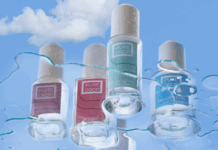Why Perform Environmental Monitoring
There have been recent and very public recalls of cosmetic products contaminated with microorganisms. Given the environmental and financial impact of a microbial contamination event, cosmetic and personal care manufacturers should develop and be committed to a contamination control strategy. This consists of designing and implementing controls around your cleaning, batching process, and product filling to reduce microbial contamination at your manufacturing sites. Environmental monitoring (EM) programs are all about evaluating microbial risk in your facilities. EM programs help you establish a state of control of your manufacturing sites and support quicker response and remediation when there is a contamination event.
While cosmetic and personal care product manufacturing sites are not currently required by regulatory agencies to establish comprehensive quality systems and EM programs, this is changing. Regulators are increasing their scrutiny of cosmetic manufacturing quality. For example, the Modernization of Cosmetics Regulation Act of 2022, known as MoCRA, will require all companies that market their cosmetics in the United States to manufacture according to current good manufacturing process (cGMP) principles. Cosmetic and personal care manufacturers must be concerned about product safety and should be committed to detection and mitigation of microbial contamination events earlier and faster.
How can you ensure product quality if you aren't in control of your manufacturing environment? The real benefit of a microbiological monitoring program lies in the ability to understand your manufacturing environment. EM gives you the power to easily identify areas for quality improvement, respond quickly and proactively to microbial changes, and maintain an overall contamination control strategy.
Be Proactive Instead of Reactive
The true value of EM programs comes down to understanding what is in your environment in the first place. If you don't have a clear picture of what microbes inhabit the manufacturing environment, you don't know what risks there could be to your product and to the consumer. As an analogy, EM is a lot like the impressionism technique pointillism, a process using lots of little dots to create a picture. When you get close to the picture all you see are dots, but as you step away and see the picture as a whole only then can you truly appreciate all that is there. Similar to manufacturing, if you are only testing your final product, you are only getting a snapshot in time. However, when you monitor your air, water, and equipment, you can see what is really going on at the site...the full microbial picture. EM programs serve as early warning systems that can change your manufacturing processes from reactive to proactive.
EM sampling sites should include water sources, air, and equipment surfaces - places that can harbor microorganisms. How often you monitor will depend on your risk assessment. Some areas may need more frequent testing than others. Risk levels can fluctuate over time in your manufacturing sites and may require reassessment. For example, EM can uncover seasonality of microorganism growth in the summer versus winter months. By identifying seasonal changes in your facility's resident microbiota, you can adjust your cleaning and sanitization program to minimize risk of microbial contamination.
Evaluating your EM data over time by tracking and trending can help you assess microorganism fluctuations in your environment. Without knowing the resident microorganisms in your facility, every contamination event puts you at square one to identify the cause. If you don't find the source and take corrective action, the manufacturing system can become contaminated again and again.
Assessing the Risk
Detecting contamination in your facility is only one of the many steps in a comprehensive contamination control strategy. Accurate identifications are required to understand resident microorganisms in your manufacturing site, identify cleaning and sanitization strategies, and determine contamination risk areas and points of entry. Risk assessments are an important part of a microbial contamination control strategy, and an appropriate risk assessment cannot be made without accurate microbial identifications.
An assessment of manufacturing cleanliness is not a one-time event. A facility that is in control should be monitored routinely, especially after any changes to equipment, facility, personnel, and/or processes. Microbial identifications made during this process are just as important as testing the final product to assess quality in your facility. Having the ability to link environmental samples from routine monitoring to contamination events will aid with investigations when out-of-specification results are detected, and in ideal cases, prevent them from happening again. Tracking and trending microorganisms with accurate identification methods in place are key to making confident decisions in your manufacturing facility. Without tracking and trending, it is difficult to show that the procedures put in place for preventing contamination are truly effective.
Cosmetic and personal care products are not produced to be sterile; however, they do need to be safe for consumer use. Having some microorganisms present isn't bad, but too many can pose health concerns to users or problems with product stability. Some microorganisms can be harmful no matter the number. Only if you have an accurate microbial identification method in place can you be confident that your products are truly safe.
Your microbial identification quality is only as good as your method. Poor quality identification methods can yield inaccurate data or even no identification, causing investigations to go in circles, and can result in inconclusive or incorrect decisions when accuracy is critical. There are many technologies used to identify microorganisms isolated from manufacturing environments (e.g., genotypic, proteotypic, and phenotypic methods), and being aware of the limitations of each of these technologies is essential.
Environmental Monitoring Matters
A microbial control plan can help mitigate a contamination event when they happen or from reoccurring. It is important that you establish a state of control of your manufacturing sites to support quicker response and remediation. Environmental monitoring along with facility design, manufacturing processes, and cleaning methods are critical aspects in documenting your state of control. Utilize your Quality Control team to develop and implement an EM program. Be smart about your manufacturing quality, reduce contamination events that can lead to recalls while saving your company time and money.








